D-PHYS at the Long Night of the Museums 2023
Physicists Andreas Eggenberger and Marius Simon demonstrated some exciting experiments during this year's Long Night of the Zurich Museums at focusTerra: they debunked the colour of gold, created a rainbow in the middle of the night and let a green laser beam take a balloon to its breaking point.
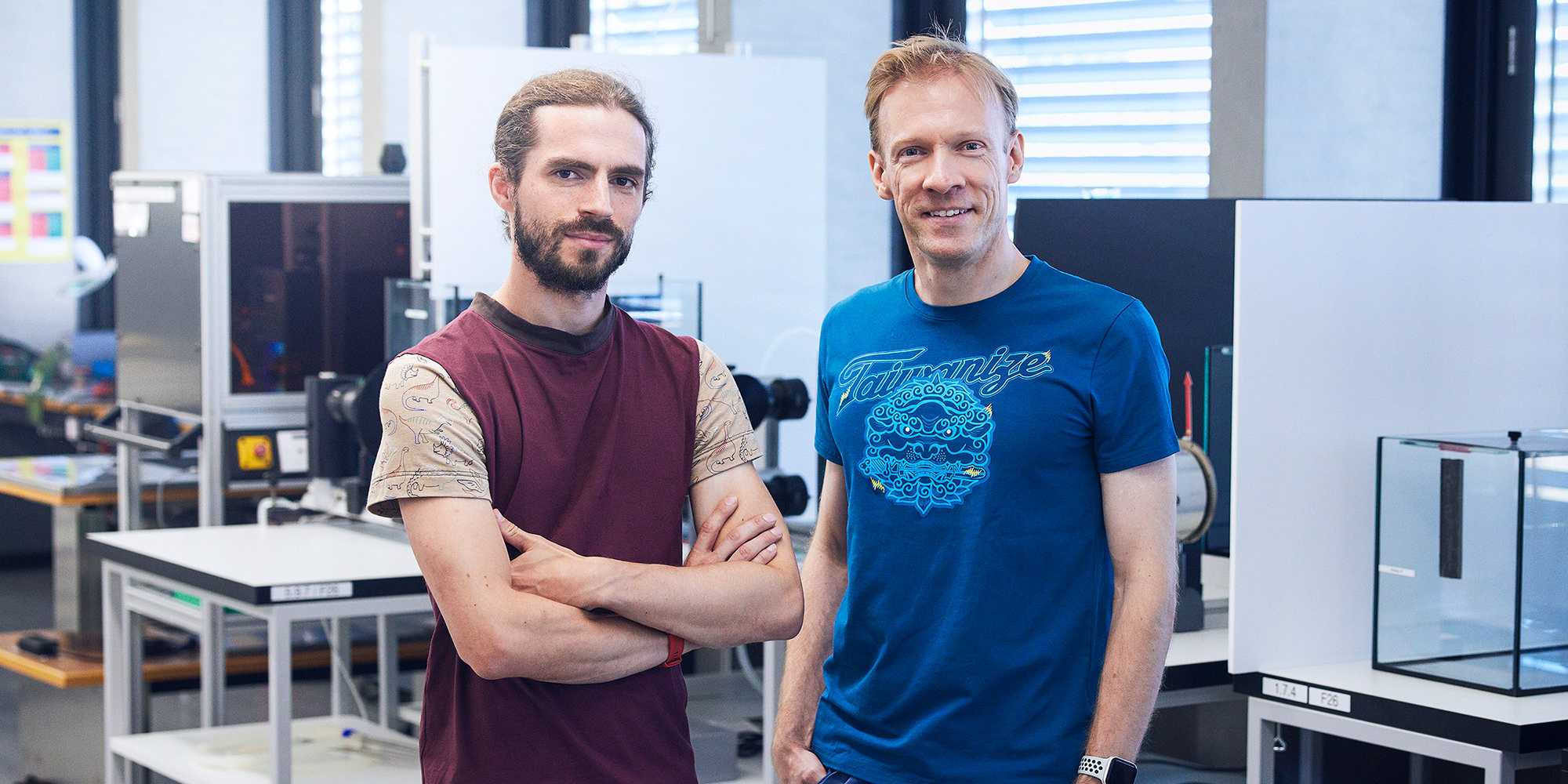
In three shows at focusTerra, Dr Andreas Eggenberger showed the audience various experiments on the topic of light and colour.
For example, he demonstrated that only wavelengths in the incident light spectrum that are reflected can be perceived by the human eye. As a result, the mythical gold lost a good deal of its magic: as it transmits blue light, the light it reflects appears golden.
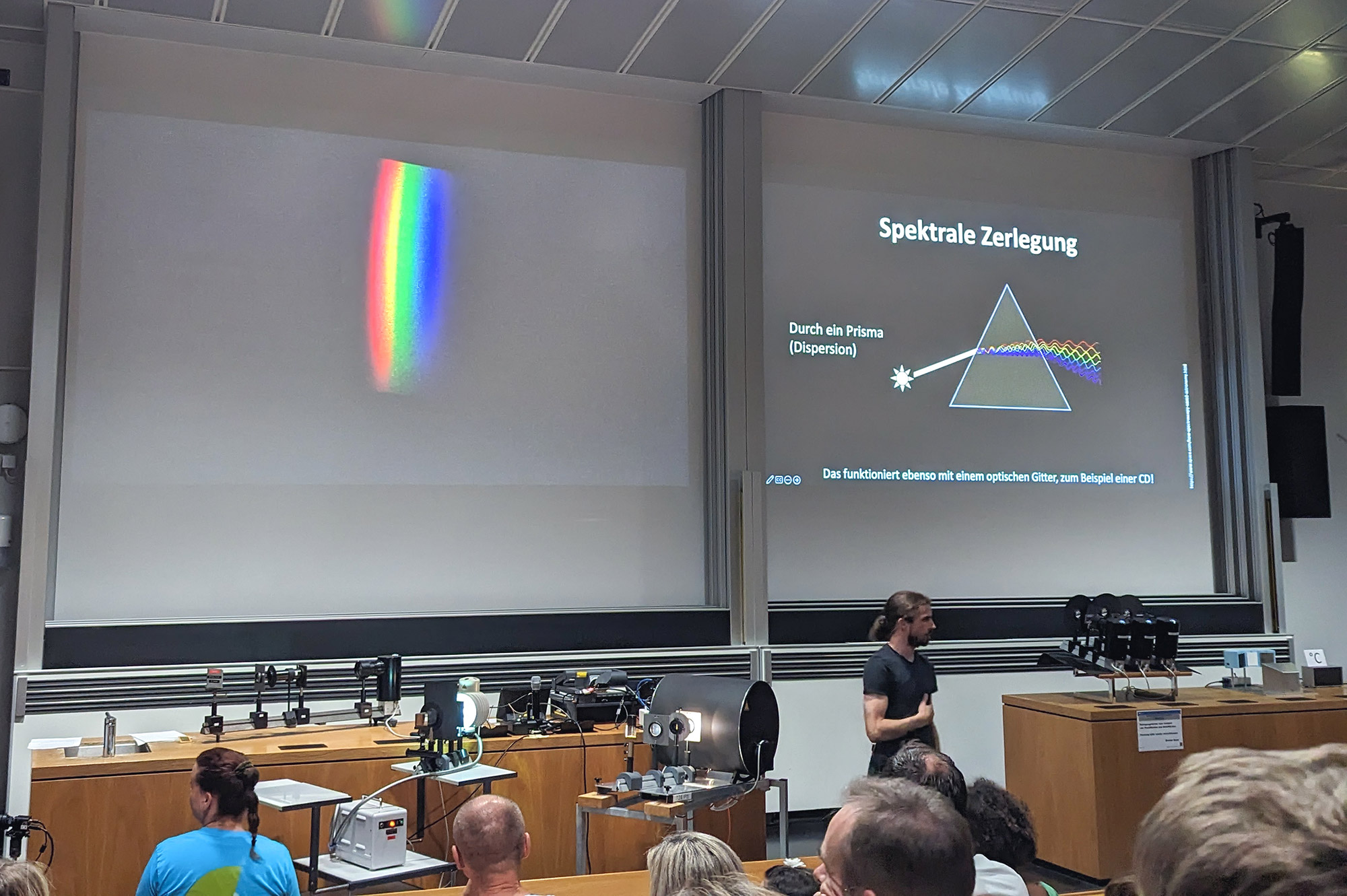
And what happens when you mix different wavelengths of light? If you let red, green and blue light shine on the same spot, you obtain white light - this is what underlies the monitors and displays we use in our everyday lives.
What is even more interesting is how to reverse this mixing of light colours: Eggenberger let the light from an incandescent lamp and a mercury lamp shine through a prism, and this broke the light into individual wavelengths again - which is what happens when a rainbow forms in the sky. Indeed, the continuous spectrum of the white light emitted by the incandescent lamp and the discrete spectrum of the white light emitted by the mercury lamp suddenly became visible.
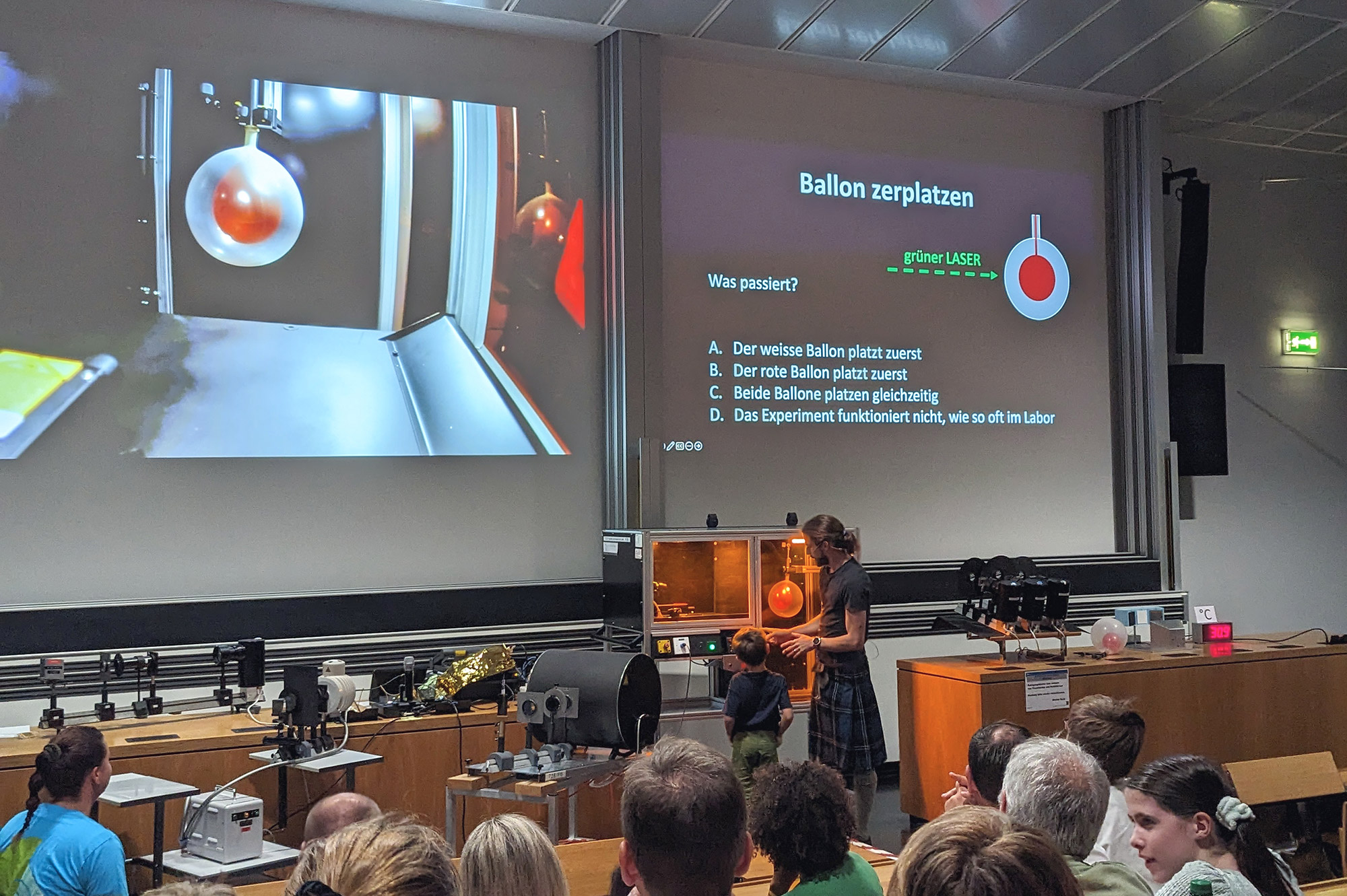
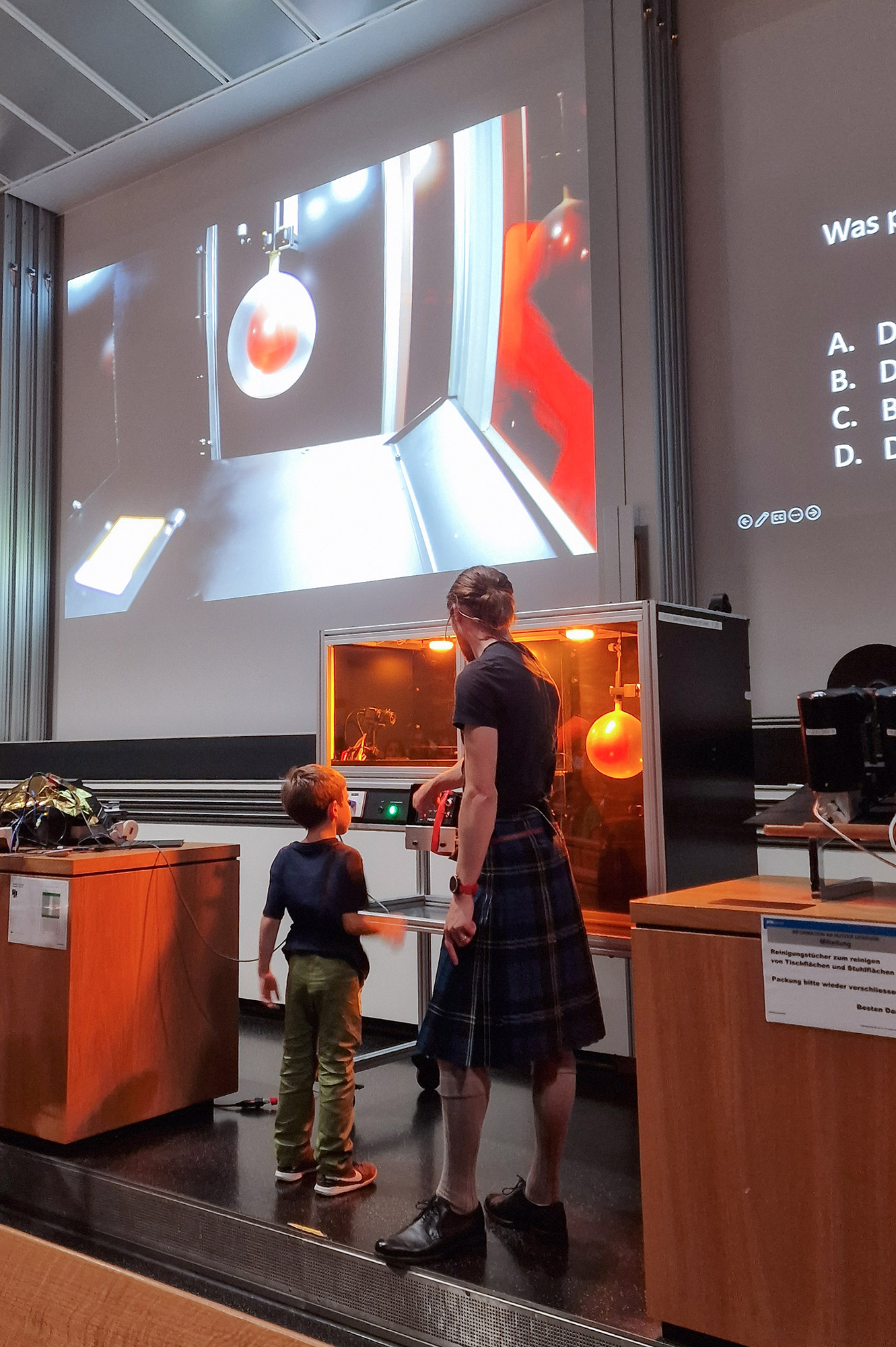
Another experiment dealt with infrared light and the absorption capability of differently coloured surfaces, which illustrates why reflective surfaces heat up less than black surfaces, for instance, and the role infrared light plays in heat absorption.
The final experiment combined all previous ones: green laser light was absorbed so strongly by a red-coloured balloon that it led the balloon to explode with a bang.
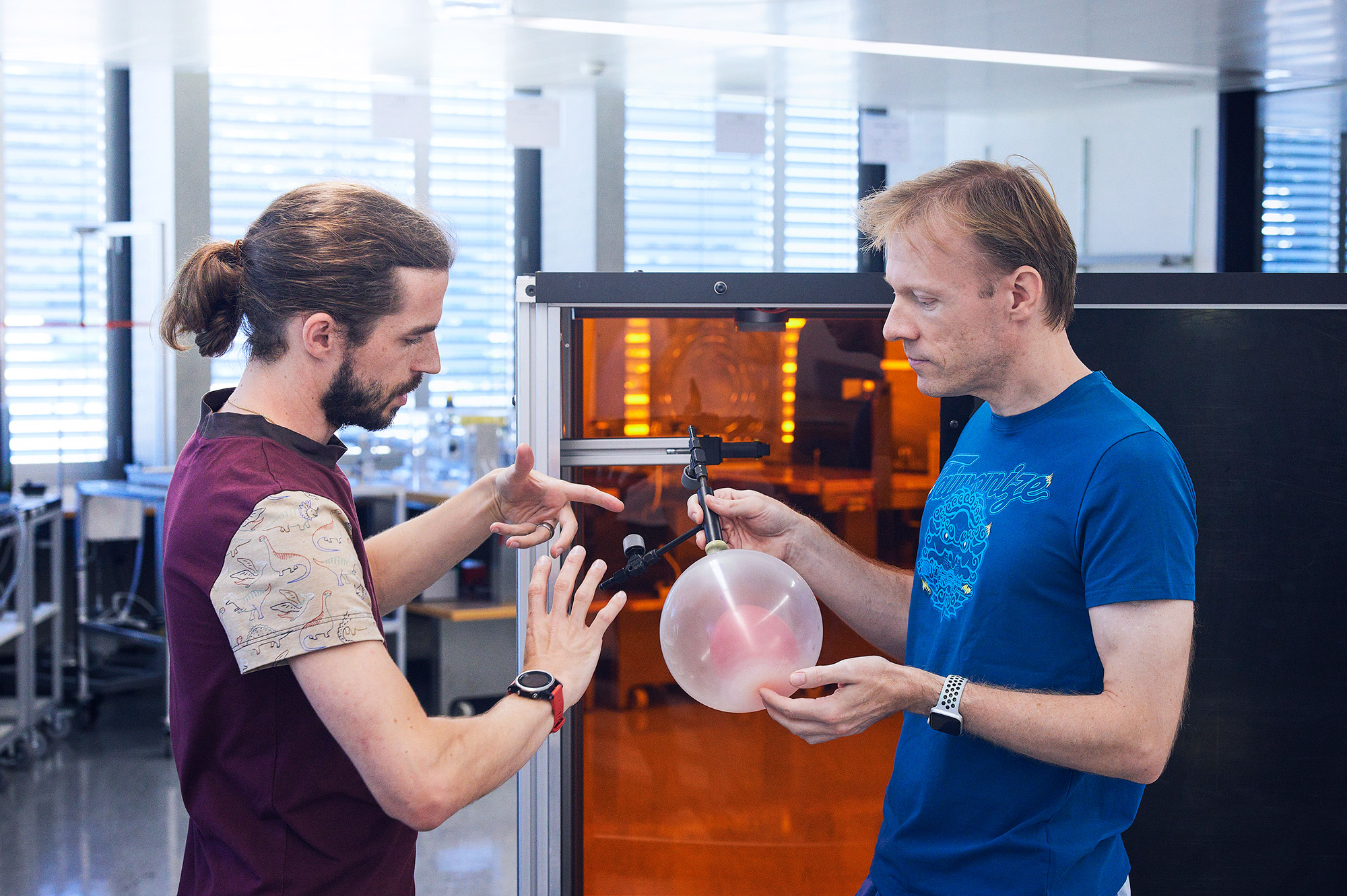
Throughout the event, visitors could try their hand at some physics experiments too. One such experiment allowed visitors to 'pour light' by using a water stream as a light guide. UV light made everyday objects look very different from the way they are usually perceived, and visitory could even transmit music by means of light, which makes for a wonderful information carrier.
Working out the 'big picture' for the whole show, putting together the experiments and sometimes modifying them to suit the requirements of the location required quite some preparatory work and improvisation from Dr Marius Simon.
Translated from German by Gaia Donati
